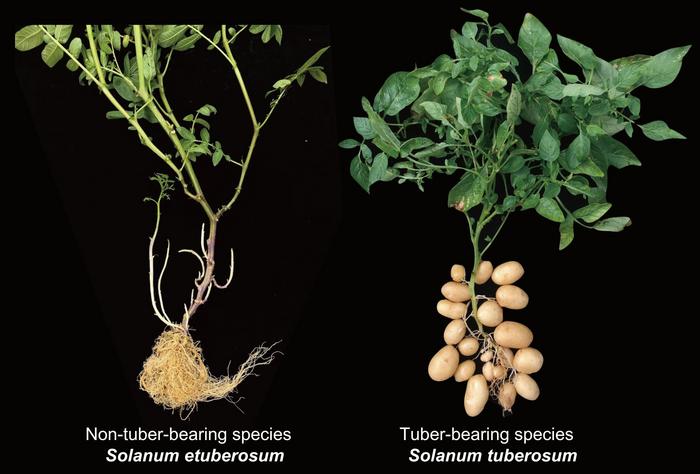
Scientists Discover that Potato Evolved from Tomato
August 6, 2025| |
An international research team has solved the mystery of the potato's origin, discovering that modern potatoes arose from a natural interbreeding event about 9 million years ago. Published in the journal Cell, the study reveals that ancient tomato plants and potato-like species from South America hybridized, which triggered the evolution of the tuber, the nutrient-storing structure potatoes are known for.
The potato's origin had long puzzled scientists. Modern potato plants appear almost identical to three potato-like species from Chile called Etuberosum. But these plants do not carry tubers. Based on phylogenetic analysis, potato plants are more closely related to tomatoes.
By analyzing 450 genomes of cultivated and 56 of wild potatoes, researchers found that the potato's key tuber-forming genes are a combination of genetic material from both parents. They found that every potato species contained a stable, balanced mix of genetic material from both Etuberosum and tomato plants, suggesting that potatoes originated from an ancient hybridization between the two. While Etuberosum and tomatoes are distinct species, they share a common ancestor about 14 million years ago.
The team also traced the origins of the potato's key tuber-forming genes, which are a combination of genetic material from each parent. They found that the SP6A gene, which controls tuber formation, came from the tomato, while the IT1 gene, which helps with the growth of underground stems, came from the potato-like species. This evolutionary innovation coincided with the uplift of the Andes mountains, allowing potatoes to thrive in diverse and challenging new environments.
For more details, read this news release or download the paper from Cell.
| |
You might also like:
- Study Reveals Narrow Genetic Basis of European Potato
- Late Blight Field Resistance in Potatoes With Genes from Wild Relative
- Gene-edited Potatoes Show Enhanced Biotic and Abiotic Stress Resilience
Biotech Updates is a weekly newsletter of ISAAA, a not-for-profit organization. It is distributed for free to over 22,000 subscribers worldwide to inform them about the key developments in biosciences, especially in biotechnology. Your support will help us in our mission to feed the world with knowledge. You can help by donating as little as $10.
-
See more articles:
-
Plant
- Chinese Researchers Achieve Megabase-Scale Genome Editing
- Clemson University Researchers Develop High-Yield, High-Quality Fiber Gene-Edited Cotton
- Heidelberg Researchers Develop AI Model to Forecast Two Proteins for Gene Editing
- FSANZ Invites Comments on GM Purple Tomato
- Scientists Discover that Potato Evolved from Tomato
- 8th Asian Short Course on Agribiotechnology, Biosafety Regulation, and Communication (ASCA8)
-
Food
- Scientists Decode the Signature Scent of Gardenia Tea
-
Environment
- ISAAA E-newsletter Evolves to Deliver Enhanced Value in Agri-biotech
-
Read the latest: - Biotech Updates (December 17, 2025)
- Gene Editing Supplement (December 17, 2025)
- Gene Drive Supplement (February 22, 2023)
-
Subscribe to BU: - Share
- Tweet

